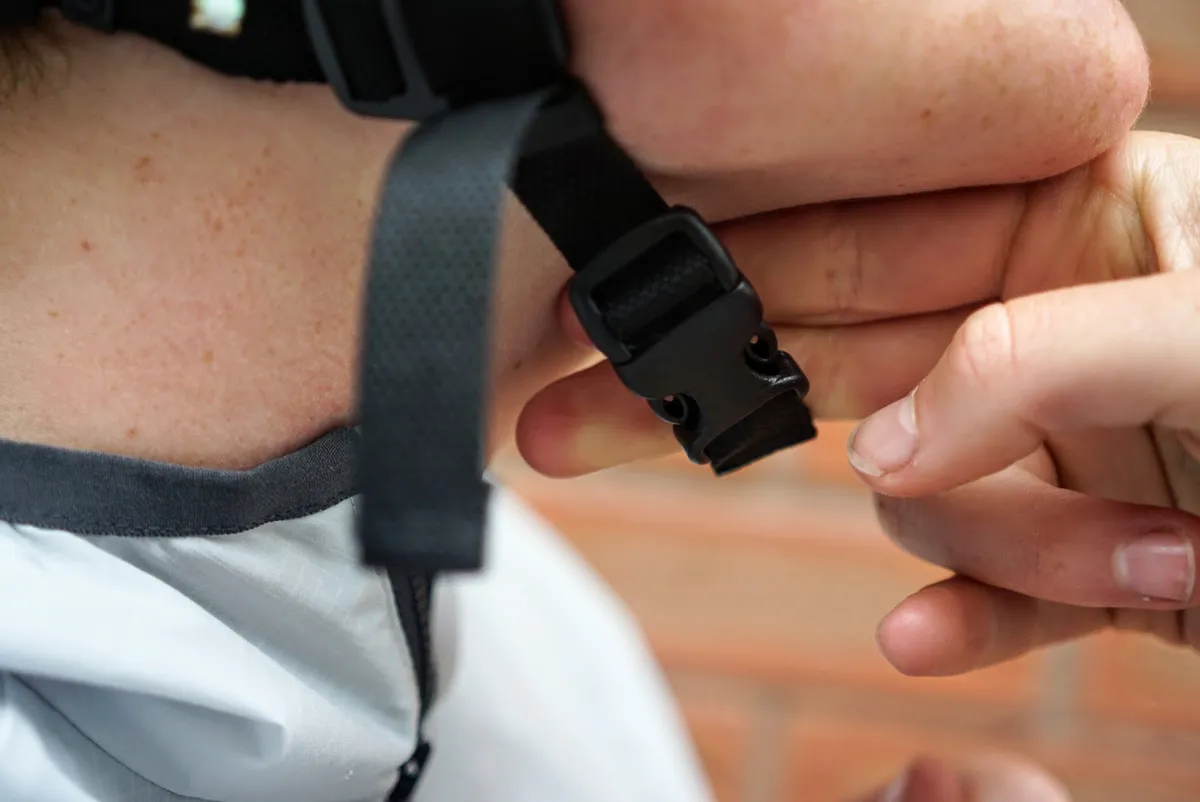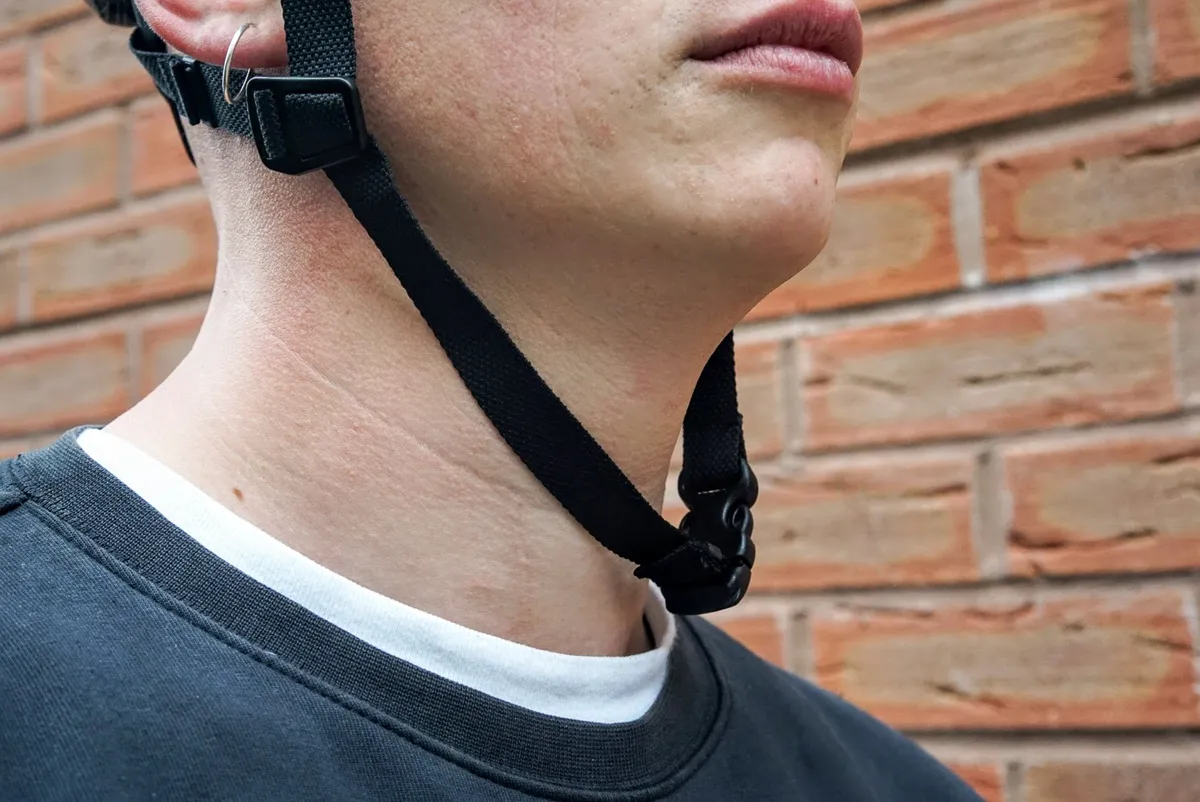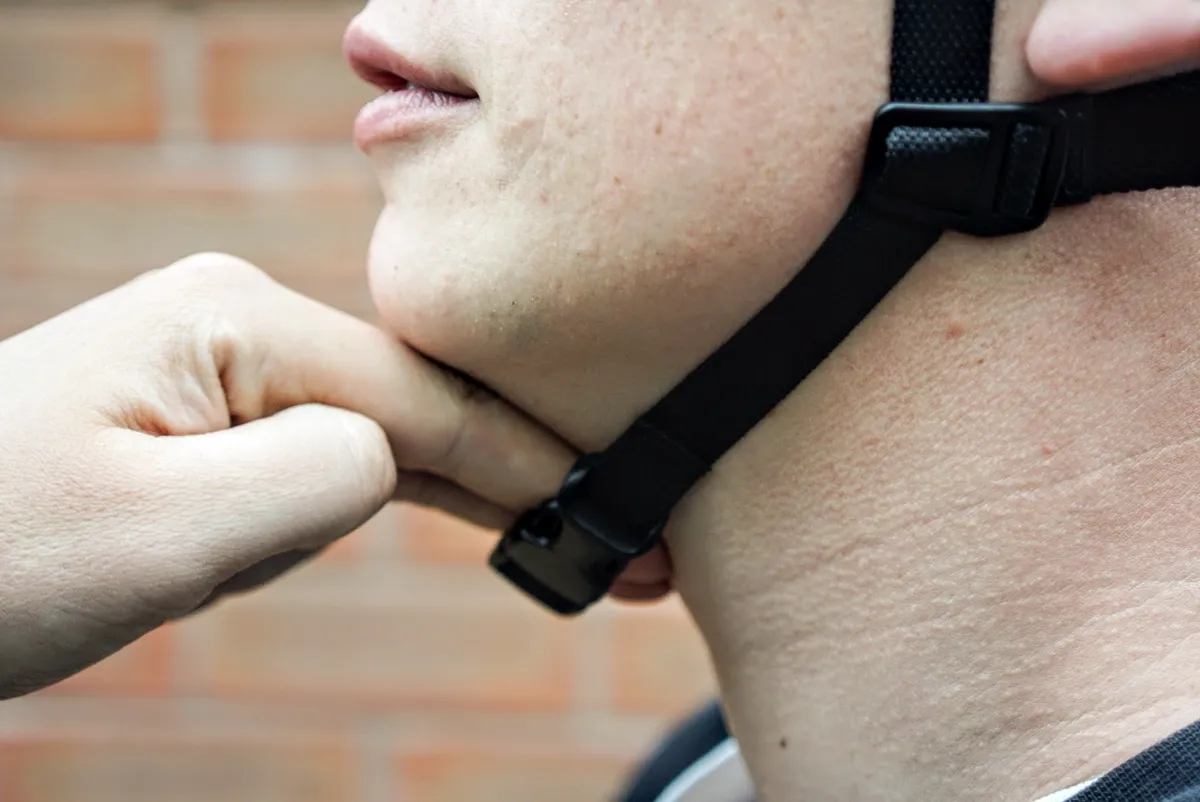Fitting and wearing a helmet properly is just as important as wearing one at all because without the correct fit, the bike helmet’s function can be seriously compromised.
Here, we go over how to wear a bike helmet – and how not to – so you can make sure that it has the best chance of keeping you safe.
Why is wearing a helmet properly important?
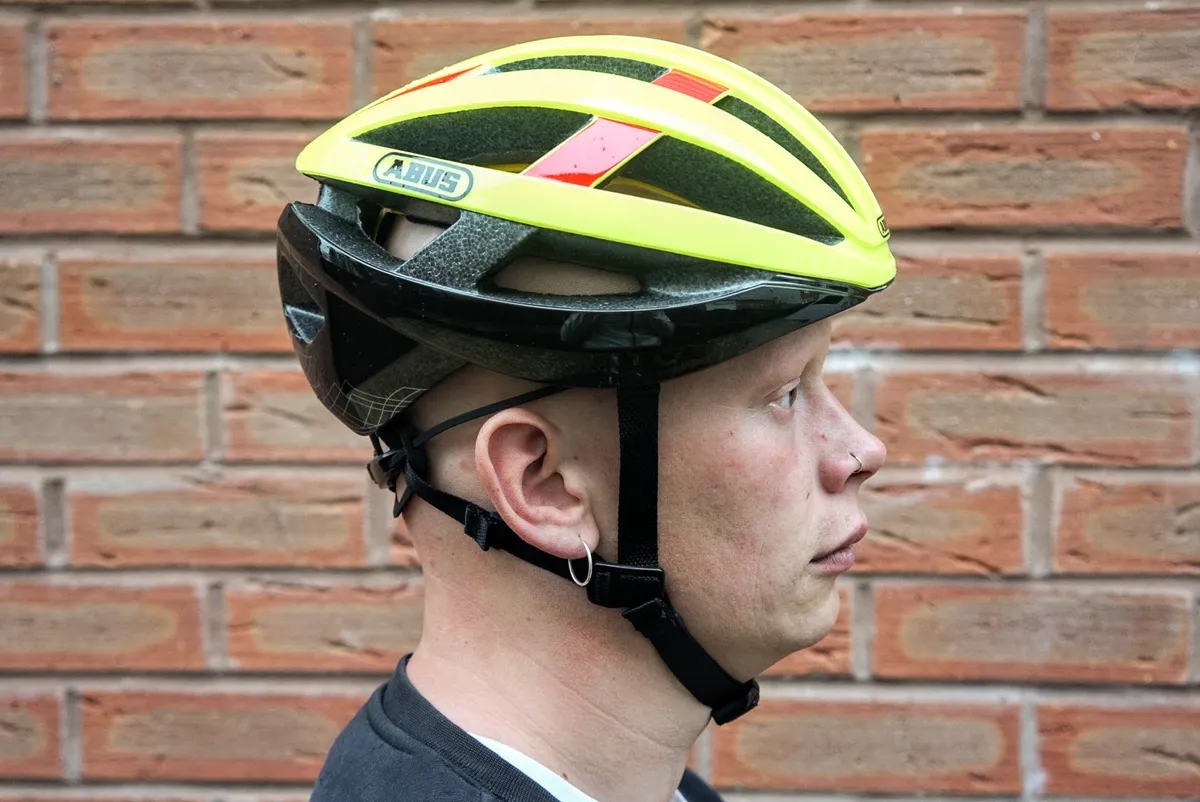
Helmets are designed to help reduce the risk of serious injury, both to the head and brain, in the unfortunate event of an accident.
One recent meta-analysis found that wearing a helmet reduced the odds of suffering a head injury by 51 per cent, a serious head injury by 69 per cent and a fatal head injury by 65 per cent.
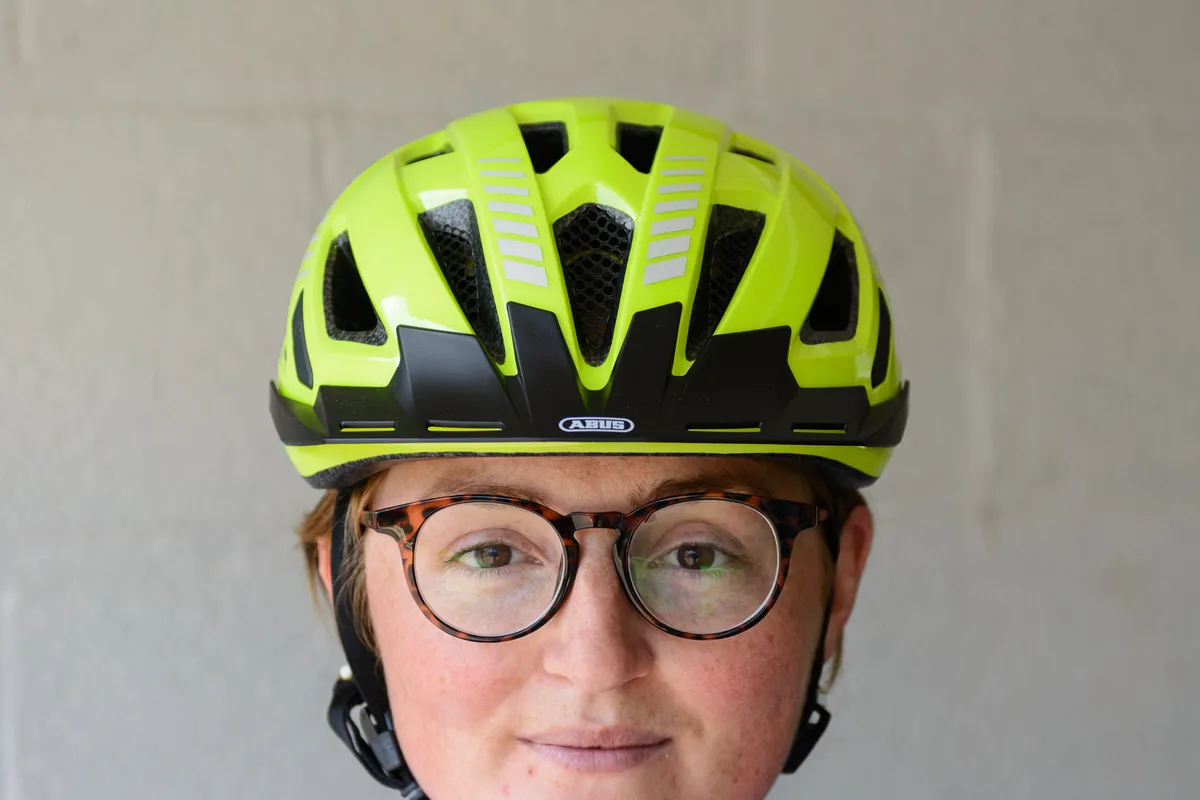
Having said that, using a helmet correctly is absolutely crucial to unlocking these potential safety benefits.
Without proper fitting or positioning, a helmet can lose the protective qualities it has been designed for.
Helmet fitting is simple – with a few easy adjustments, you can be confident you are doing what you can to protect yourself.
Choosing the right size helmet
Choosing the right sized helmet is a really crucial first step: most have a range of sizes, which is dictated by your head circumference.
These sizes typically range between 50 to 60cm, and as head shapes can also vary, it’s well worth trying on a helmet before you buy it to ensure the fit is comfortable.
Using a fabric tape measure, hold the tape horizontally around your head just above your ears and brow. This will give you the circumference of your head, which will dictate the size of helmet you need.
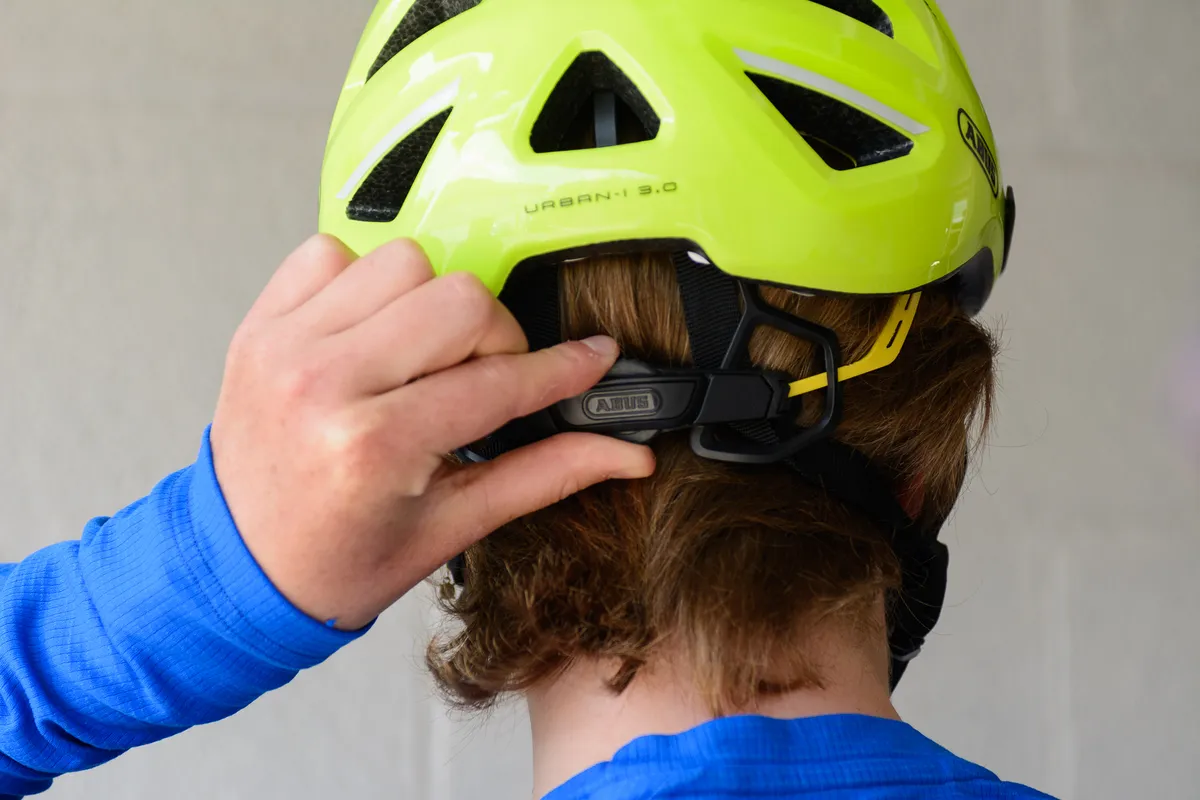
You’ll be able to fine-tune the fit later, but getting the right size to start is key.
Choosing the right type of helmet
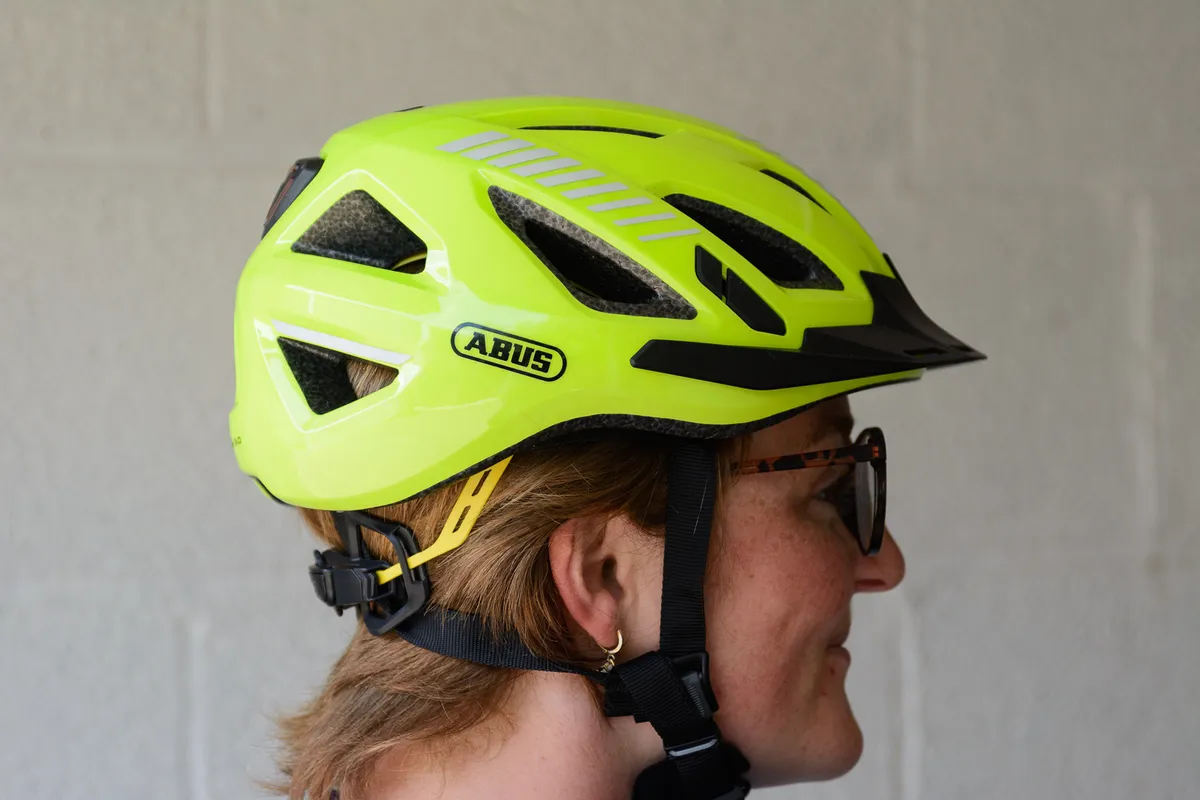
For some disciplines, getting the right type of helmet will offer more protection.
For example, mountain biking helmets not only have a peak to protect you from low branches and some weather, but also typically come down lower around the back of the head for extra protection.
Some urban helmets may also feature visors, to help keep glare and rain out of your eyes.
Road cycling helmets don’t have visors because they could potentially limit your field of vision when riding in a more aggressive position on the drops.
How to wear a bike helmet correctly
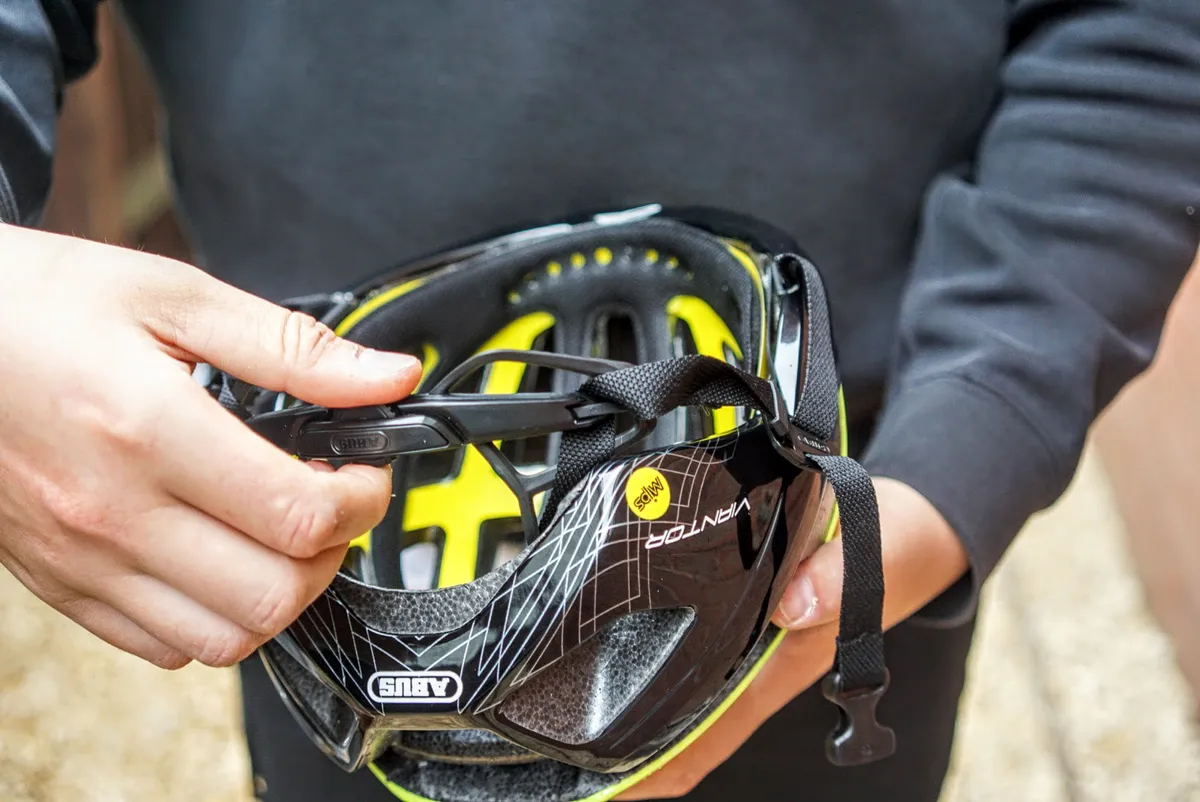
Before putting the bike helmet on your head, loosen off any straps or ratchets so it sits onto your head easily.
Once on, and set up level on your head, you can secure and adjust the features to fit – the front of the helmet should be one to two finger-widths above your brow.
Adjusting the fit of a helmet
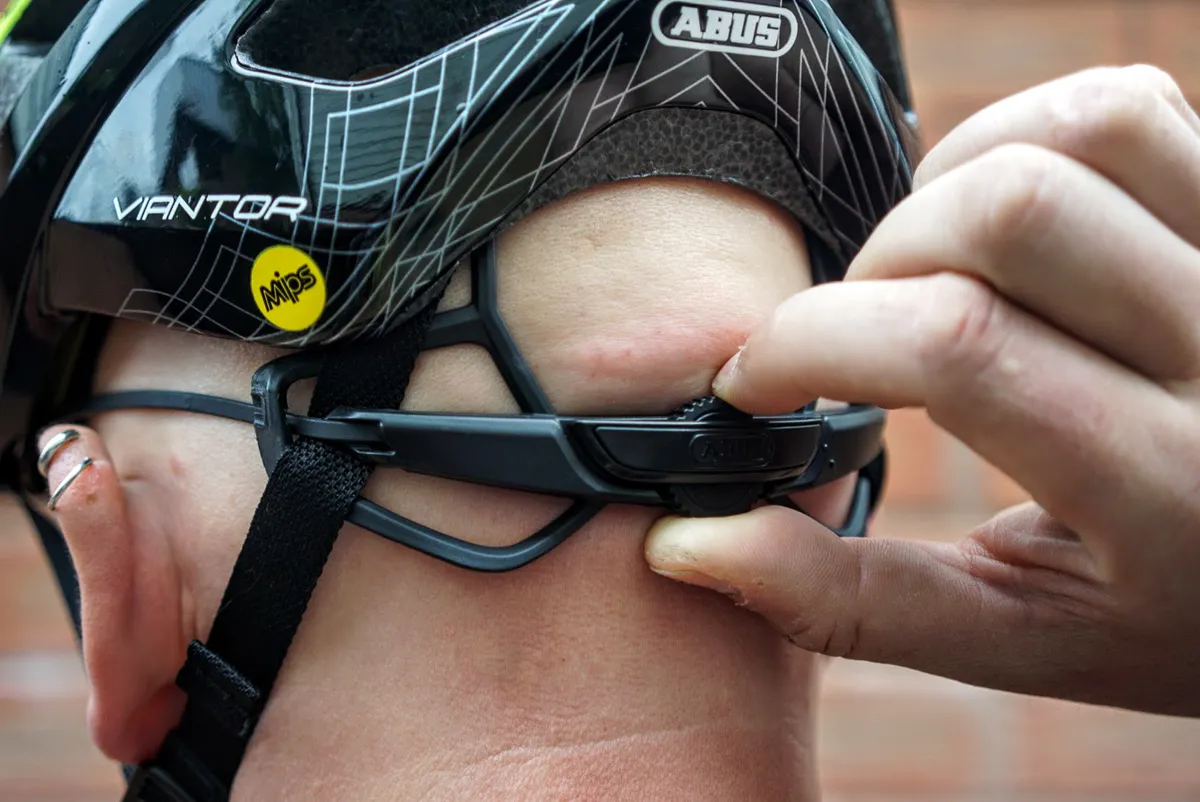
To fit and secure the helmet, tighten the ratchet system so the helmet fits snugly around the circumference of your head, with minimal movement when you shake your head, but not so tight that it feels uncomfortable.
Remember, you’ll be able to adjust this on the go, too.
Setting up the straps on a helmet
Once you’re happy with the fit on your head, you can adjust the straps on your chin and around the sides of your head.
You should tighten the chin strap so it is tucked securely under your chin, rather than dangly and loose.
Fitting one to two fingers in here when secured shows it is tight enough, but will still give enough space to avoid irritation or restricting movement.
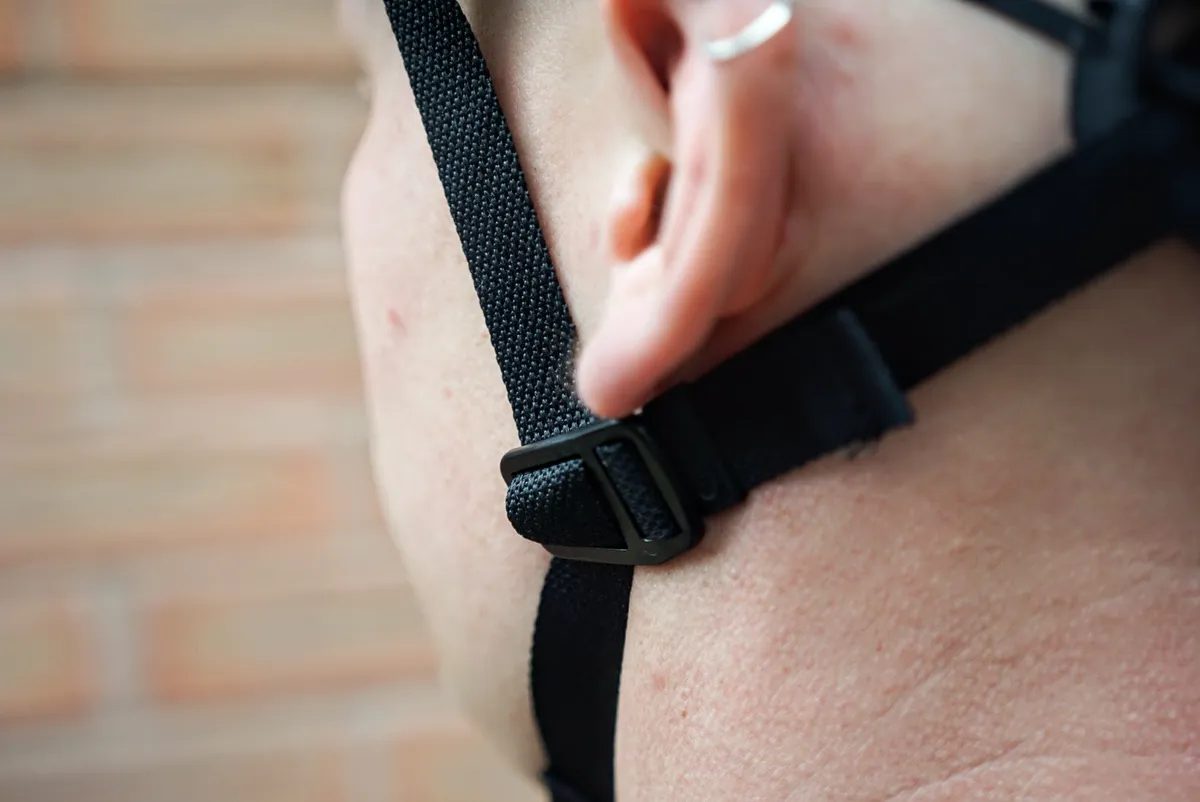
You may also be able to adjust the fit of the straps by the ears so they fit just under your earlobes. Many helmets have an elastic fitting where you can secure any loose end of strap webbing under the chin, too.
Once you’re happy with the fit of the straps, it’s unlikely that you’ll need to adjust these regularly, unless you’re wearing different headgear or hairstyles that significantly affect the fit.
How not to wear a helmet
There are a few common pitfalls when it comes to wearing a cycling helmet…
Don't wear the helmet too far back on your head
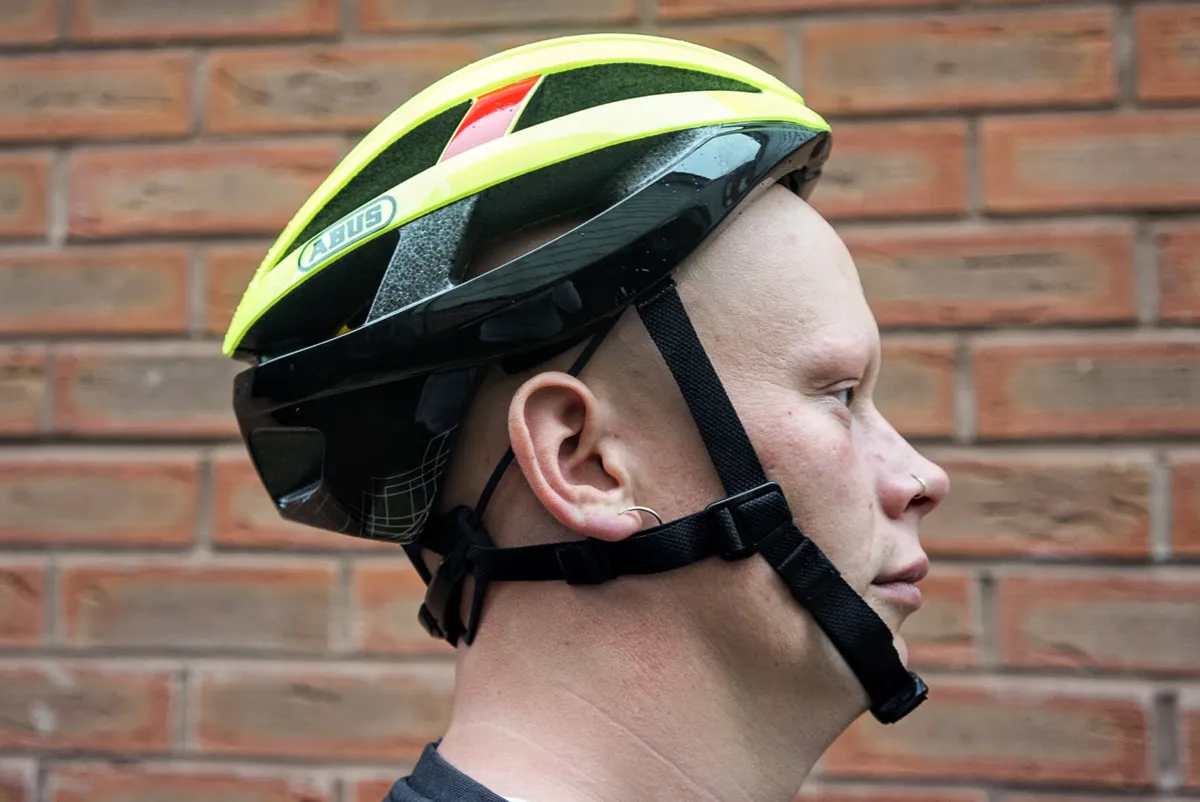
The first is wearing the helmet too far back on the head, tilted back with a lot of your forehead exposed, rather than sat level on the top of the head.
Make sure the helmet actually fits you
A helmet that’s sized too small can be really uncomfortable, or even not sit on the head properly at all, and a helmet that's sized too big can roll about and most importantly not protect you as it should in the event of an accident.
Don't wear a thick hat underneath your helmet
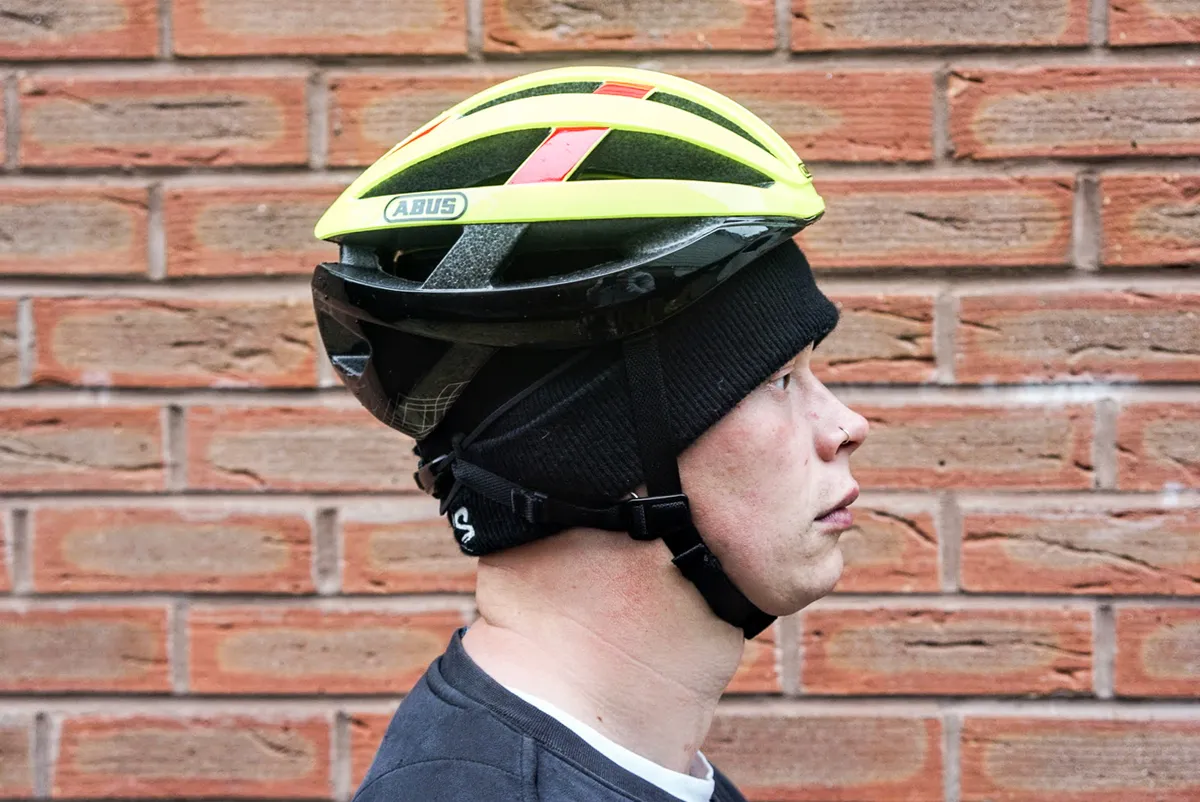
It may be tempting on a really cold day to wear a thick hat under your helmet, but if this means that the helmet doesn't fit onto your head properly, it’s not a safe move.
Thinner hats or ear coverings are a much better idea.
Safely stow hair
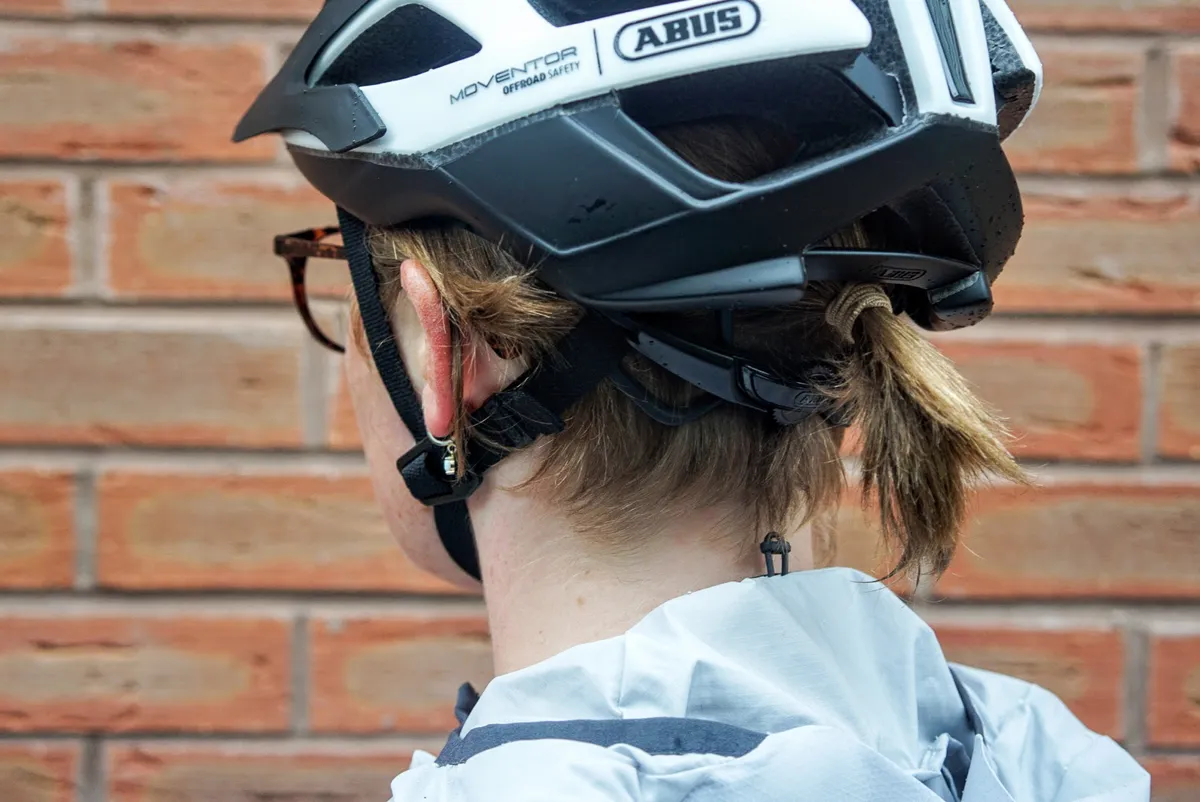
For riders with a lot of hair, you may need to reconsider your hairstyle to make sure your helmet fits well.
Some helmets allow a ponytail or plait to fit through the mechanism at the back.
Make sure the straps are correctly adjusted
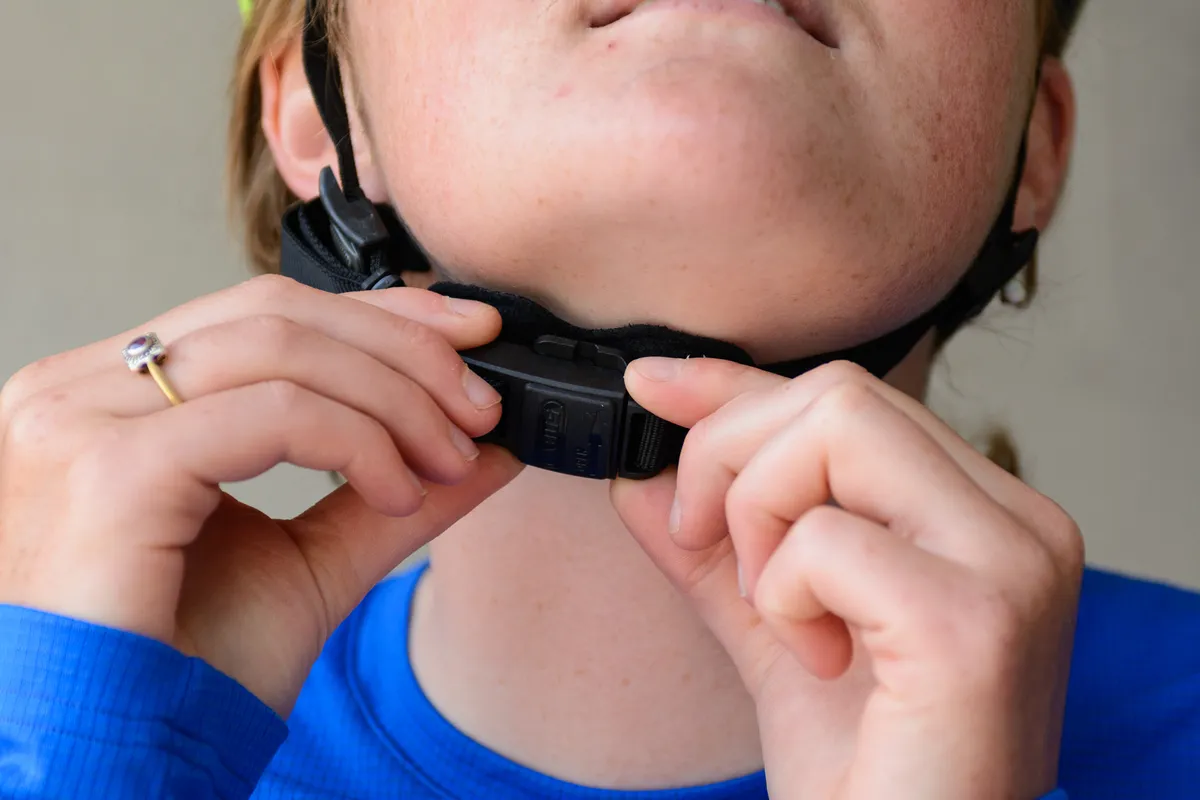
If your helmet straps are too loose, then the helmet is less likely to stay in the optimal position to protect you when you need it most and the same goes for not doing up the chin strap at all.
Don't wear your helmet back to front
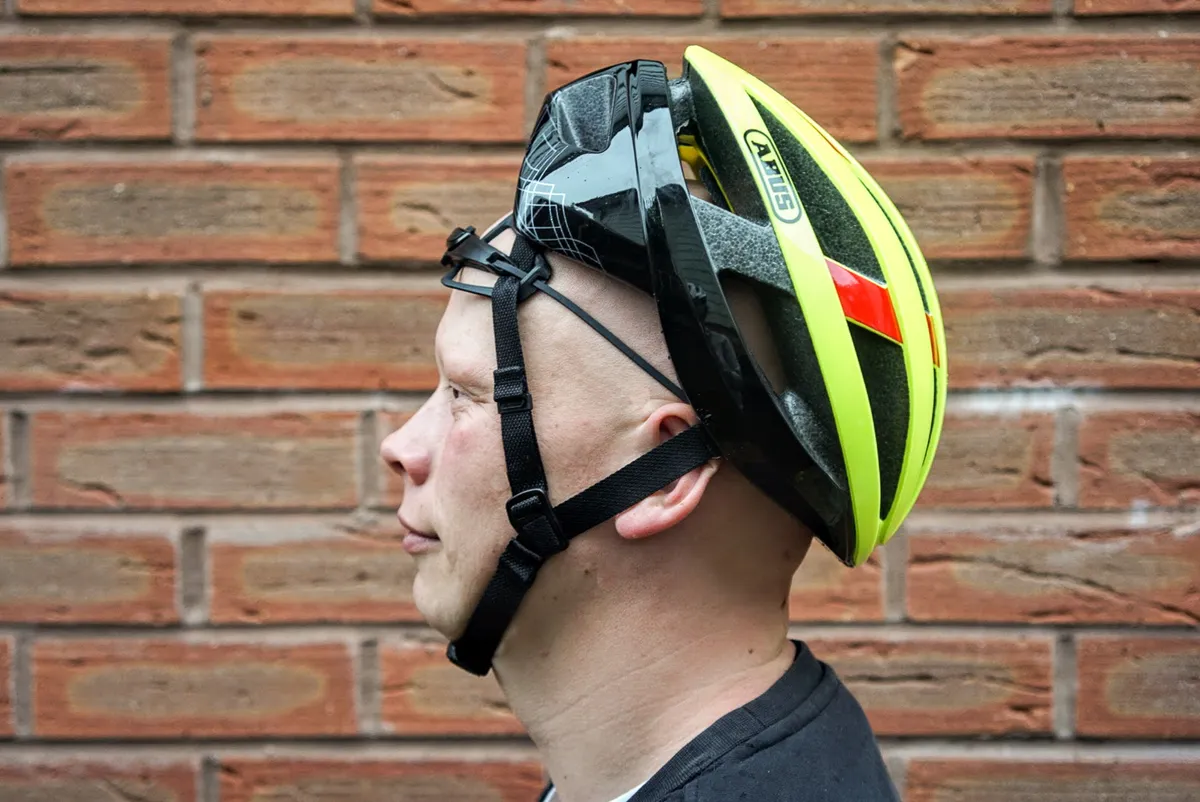
Lastly, make sure that you have the orientation of the helmet correct front to back.
The back is often a little lower than the front to protect the skull and may feature an adjustment system that the front will not.

